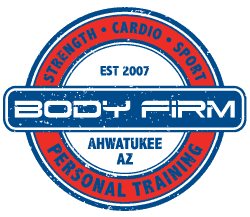If you read the newsletter last month, hopefully, you gleaned some tips on how to better manage back pain whether it’s chronic or temporary. Either way, back pain is….well…just that — a pain in the back! Annoying and sometimes debilitating! We’ve got some more tips for you from a highly respected back pain expert, Stuart McGill, Ph.D., also known as “The Back Mechanic.”
Below you can find more of his principles to consider for helping to alleviate or eliminate back pain.
Beware of “passive treatments.”
Treatment falls into two broad categories: Passive – designed to cure the pain (the symptom) and Active – designed to address and cure the cause.
Passive treatment is having somebody do something to you. Having an ultrasound machine rubbed over your back is passive treatment; the patient simply sits, stands or lies down while someone does something to the patient. Passive therapies administered from devices do not correct the pain and it rarely increases the likelihood of a long-term back pain cure. In contrast, there is an occasion where passive approaches such as certain chiropractic manipulations address part of the cause. These types of approaches must be combined with active patient engagement to cure a patient.
Active treatment requires the patient to participate in some manner that works toward a cure. Examples include: learning to move in a way that avoids the pain triggers, working to maintain correct posture, and replacing a mattress with a different one.
If you’ve left the doctor’s office with only pain pills and no plan for active treatment, you did not see a back expert. (This goes hand-in-hand with the above principle)
Many family doctors admit they don’t know what to do with back pain patients. They mean well, however, prescribing pain medications is what they know. Unfortunately, patients who have pharmaceutically numbed their pain often make matters worse in that they are able to continue using flawed and perturbed movement patterns which makes a bad situation worse. There isn’t much in the training of family doctors that provides insight into the world of cutting-edge back health. Seek out a back pain expert.
One therapeutic size does NOT fill all!
We’re all unique; we all have different backs and different hips that influence the back. The idea that a single magical exercise program exists that can be used in every instance is ridiculous. Using a single-mode or method for every single patient is disastrous for the patient.
It’s critical that the healthcare provider delves deeply into the patient’s injury history and creates a customized remedial strategy:
- Make the right functional diagnosis – determine the motions, postures and loads that cause the pain.
- Remove the cause.
- Choose the appropriate rehabilitative strategy that includes movements that avoid pain and heal damaged tissue.
- Enhance and broaden pain-free activities.
Success is achieved through personal re-assessment.
As recovery progresses, the program must evolve. Pain-free movement patterns will expand, as will the “dose” of training. Pain-free tolerance will increase. If training sessions lead to pain, you’ve done too much, too soon. Subsequent stages are designed following re-assessment to increase pain-free activity.
So – simply put, as you take your own journey away from back pain and toward better back health, the more of Dr. McGill’s guidelines you can follow, the more successful you will be.

